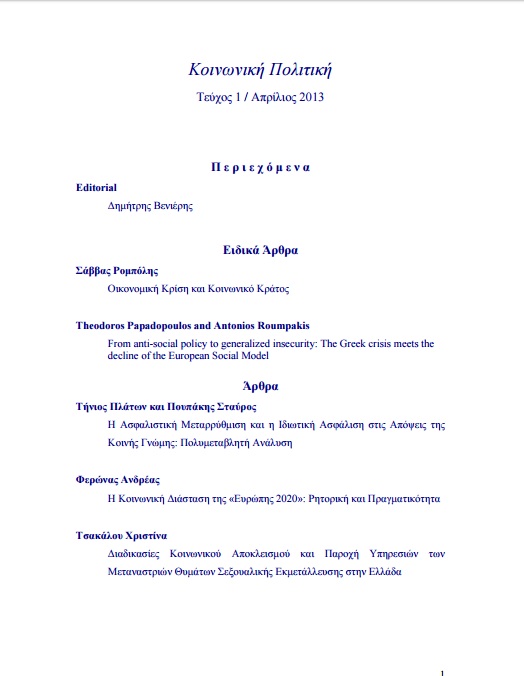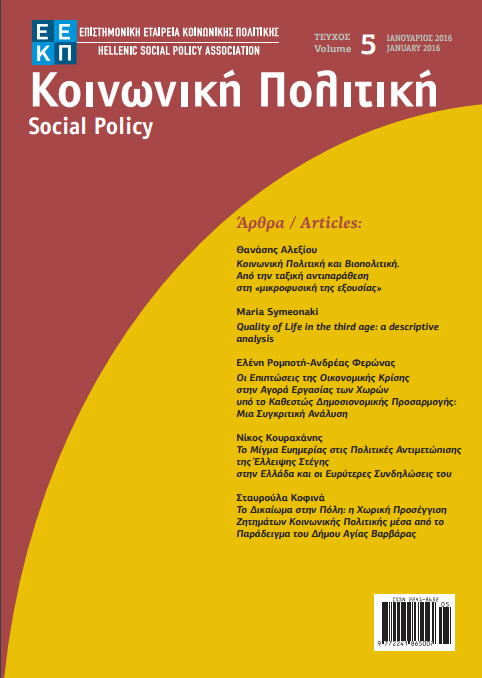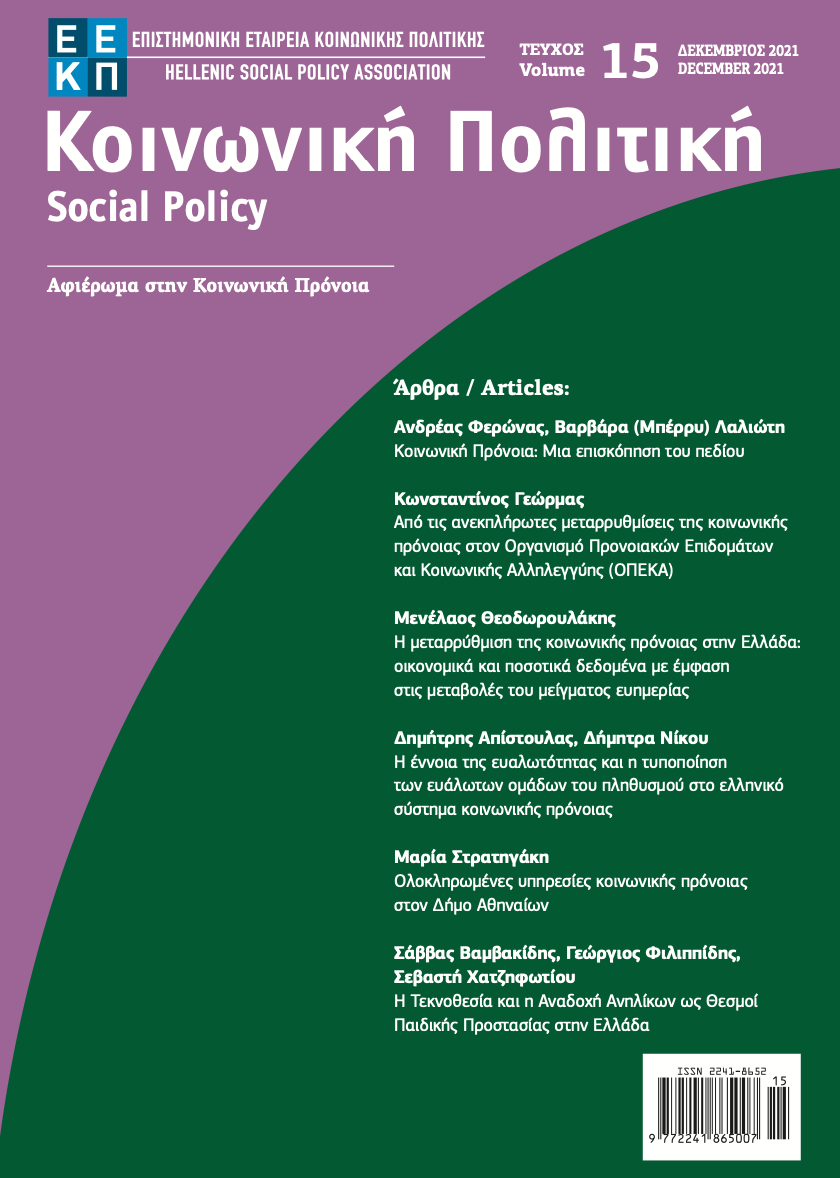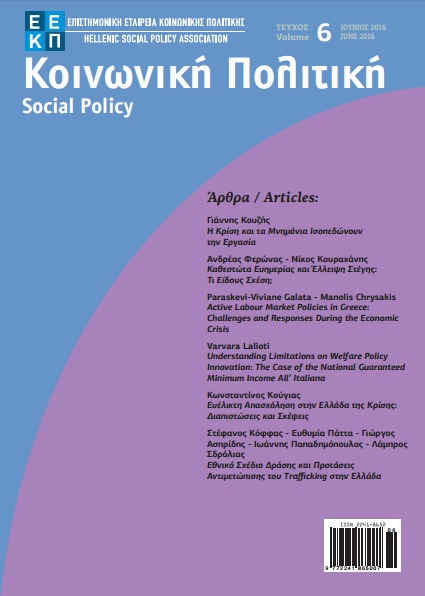Παιδική Φτώχεια και Κοινωνικός Αποκλεισμός στην Ελλάδα μέσα από την εμπειρία των παιδιών
Περίληψη
Αντικείμενο του άρθρου είναι η εις βάθος διερεύνηση της παιδικής φτώχειας και του κοινωνικού αποκλεισμού στην Ελλάδα από την οπτική των παιδιών που τη βιώνουν. Παρουσιάζει δεδομένα εμπειρικής έρευνας της παιδοκεντρικής προσέγγισης στην οποία συμμετείχαν 432 μαθητές 10-15 ετών και πραγματοποιήθηκε σε σχολεία φτωχών γειτονιών της Αθήνας, με κύρια μέθοδο τα focus groups και τριγωνοποίηση με ατομικές συνεντεύξεις, τοπικοποιημένα ποσοτικά δεδομένα και παρατήρηση στο πεδίο. Η έρευνα προσδοκά να εισάγει τη φωνή και την οπτική των παιδιών στην επιστημονική συζήτηση και στις πολιτικές για τη παιδική φτώχεια στην Ελλάδα, η οποία κυριαρχείται από ενήλικες θεωρήσεις και στατιστικά μεγέθη, αφήνοντας συσκοτισμένες τις πραγματικές συνθήκες διαβίωσης των φτωχών παιδιών. Τα παιδιά στην έρευνα εστιάζουν στην ανισότητα δύναμης με τους ενήλικες ως κύρια αιτία των πολλαπλών αποκλεισμών που βιώνουν μέσα στη φτώχεια και αναδεικνύουν τα ζητήματα των στεγαστικών και χωρικών ανισοτήτων, της ρήξης με την παιδική ζωή όταν αναγκάζονται σε εργασία με ενήλικους όρους, του στίγματος της φτώχειας και της εσωτερίκευσης του κοινωνικού αποκλεισμού που χαρακτηρίζει τις κοινωνικές τους σχέσεις.
Λεπτομέρειες άρθρου
- Πώς να δημιουργήσετε Αναφορές
-
Κοφινά Σ., & Φερώνας Α. (2023). Παιδική Φτώχεια και Κοινωνικός Αποκλεισμός στην Ελλάδα μέσα από την εμπειρία των παιδιών. Κοινωνική Πολιτική, 17, 15–33. ανακτήθηκε από https://ejournals.epublishing.ekt.gr/index.php/eekp/article/view/32799
- Τεύχος
- Τόμ. 17 (2022)
- Ενότητα
- Άρθρα

Αυτή η εργασία είναι αδειοδοτημένη υπό το CC Αναφορά Δημιουργού 4.0.
Οι συγγραφείς των άρθρων που δημοσιεύονται στο περιοδικό διατηρούν τα δικαιώματα πνευματικής ιδιοκτησίας επί των άρθρων τους, δίνοντας στο περιοδικό το δικαίωμα της πρώτης δημοσίευσης. Άρθρα που δημοσιεύονται στο περιοδικό διατίθενται με άδεια Creative Commons 4.0 και σύμφωνα με την άδεια μπορούν να χρησιμοποιούνται ελεύθερα, με αναφορά στο/στη συγγραφέα και στην πρώτη δημοσίευση για μη κερδοσκοπικούς σκοπούς και με δικαίωμα τροποποίησης μόνον με παρόμοια διανομή (αν αναμείξετε, τροποποιήσετε, ή δημιουργήσετε πάνω στο υλικό, πρέπει να διανείμετε τις δικές σας συνεισφορές υπό την ίδια άδεια όπως και το πρωτότυπο).








